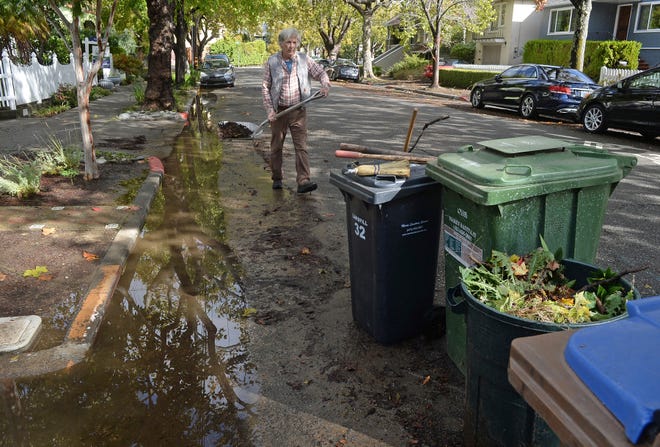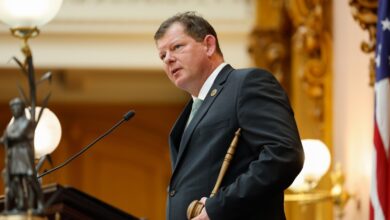
Wild weather on both coasts Tuesday pelted New York City with more than 3 inches of rain while California was digging rock and mudslides off roads and otherwise cleaning up after historic rains swept across much of the state.
New York, New Jersey and Connecticut were among eastern states facing flood warnings as storms that began Monday were expected to linger into Wednesday. New York Gov. Kathy Hochul and New Jersey Gov. Phil Murphy declared states of emergency.
In New Jersey, almost 4 inches of rain had fallen in New Providence Township, 25 miles west of New York City, before noon Tuesday. The weather service issued flood advisories across New York City. Manhattan and Brooklyn both had been swamped by 3 inches of rain, the National Weather Service reported. Staten Island had more than 3.5 inches.
Mayor Bill de Blasio said hundreds of sandbags were deployed in hard-hit Queens neighborhoods. The Brooklyn Queens Expressway was among main traffic arteries disrupted by flooding during the morning commute.
Custodial staff stayed overnight at 250 schools to make sure they withstood the storms, and the city's public schools were open Tuesday.
"We wake to heavy rain falling across the Tri-State as a strong coastal low develops offshore," the National Weather Service in New York tweeted Tuesday. "Several additional inches of rainfall is expected. Take it slow and allow yourself extra time if traveling today."
Wind gusts of up to 60 mph could drive power outages, though minimal disruptions were reported early Tuesday.
Authorities were on the lookout for flash flooding. Rushing waters from Hurricane Ida killed 11 people in basement apartments. last month.
"We learned a very painful lesson from Hurricane Ida. We experienced something we had never experienced before in terms of the sheer intensity of the rain," Mayor Bill de Blasio said. "What we're hearing now sounds more like a typical storm. Let's pray that's true."
Hurricane Ida devastation in New York, New Jersey; NYC basement apartments under scrutiny
First nor'easter of season could undergo bombogenesis
The storm has been categorized as a nor'easter since it will be spreading northeasterly winds along the coast and is the first such storm of the season to impact the region, AccuWeather said. The system is expected to quickly strengthen as it moves along the Eastern Seaboard but will begin to lose forward speed and become stationary Tuesday night.
The storm was rapidly intensifying and could reach bombogenesis, when the central pressure of a storm drops by 0.71 of an inch of mercury or more over a 24-hour period – becoming a bomb cyclone. Two bomb cyclones were blamed for severe weather that rolled across California in recent days, triggering record rainfalls, mudslides and flooding.

Philadelphia under flood watches
Much of the Philadelphia metro area was under flash flood warnings as the nor’easter moved through the region. Severe thunderstorms, lightning and heavy downpours rocked the area Monday night into Tuesday, A flash flood watch was in effect until 5 p.m. Tuesday.
Some locations reported 3 inches of rain before sunrise, and the morning rush brought a slew of traffic accidents and tie-ups.
Midwest wasn't exempt
The National Weather Service confirmed that an EF-3 tornado thrashed the southeastern Missouri city of Fredericktown on Sunday as strong storms swept the region. A tornado with that rating is considered strong, and wind speeds range from 136-165 mph. The severe weather also drifted into Illinois, damaging buildings and knocking out power. No injuries were reported.
The weather service reported over 2.5 inches of rain fell in the Chicago area during storms the storms that started Sunday and continued into Monday.
California cleanup underway
The severe weather system that rolled across California for days weakened as it moved south but remained strong enough Monday night to cause mudslides that closed roads in the San Bernardino mountains above Los Angeles.
In the northern part of the state, record rains caused widespread flooding, mudslides and rock slides as soil in wildfire-ravaged areas washed away. Strong winds knocked down trees and even toppled two big rigs on the Richmond-San Rafael Bridge near San Francisco.
At the storm's peak, Pacific Gas & Electric reported that 380,000 homes and businesses lost power, though less than 50,000 customers remained without power Tuesday.
Contributing: The Associated Press
Source link









